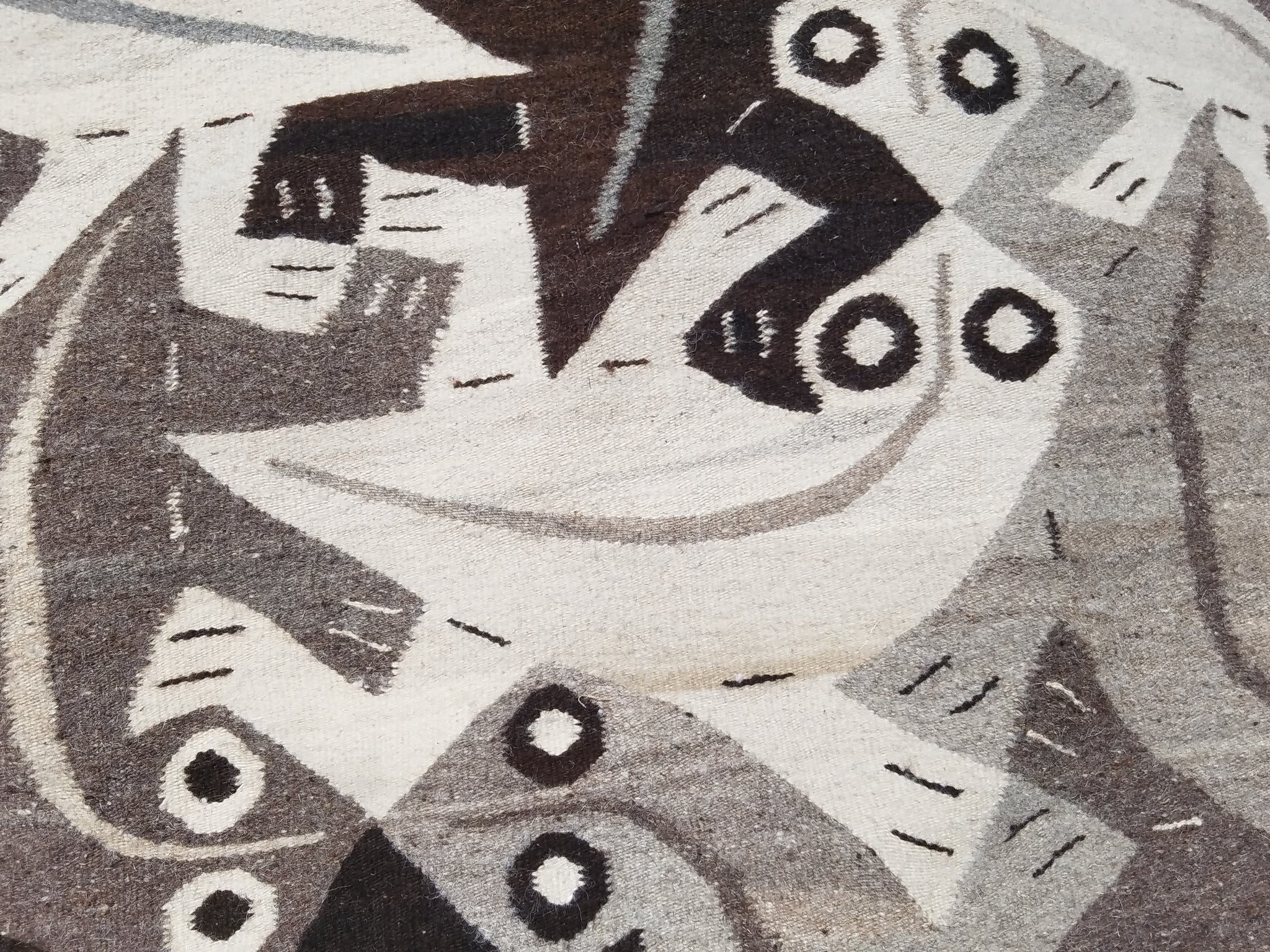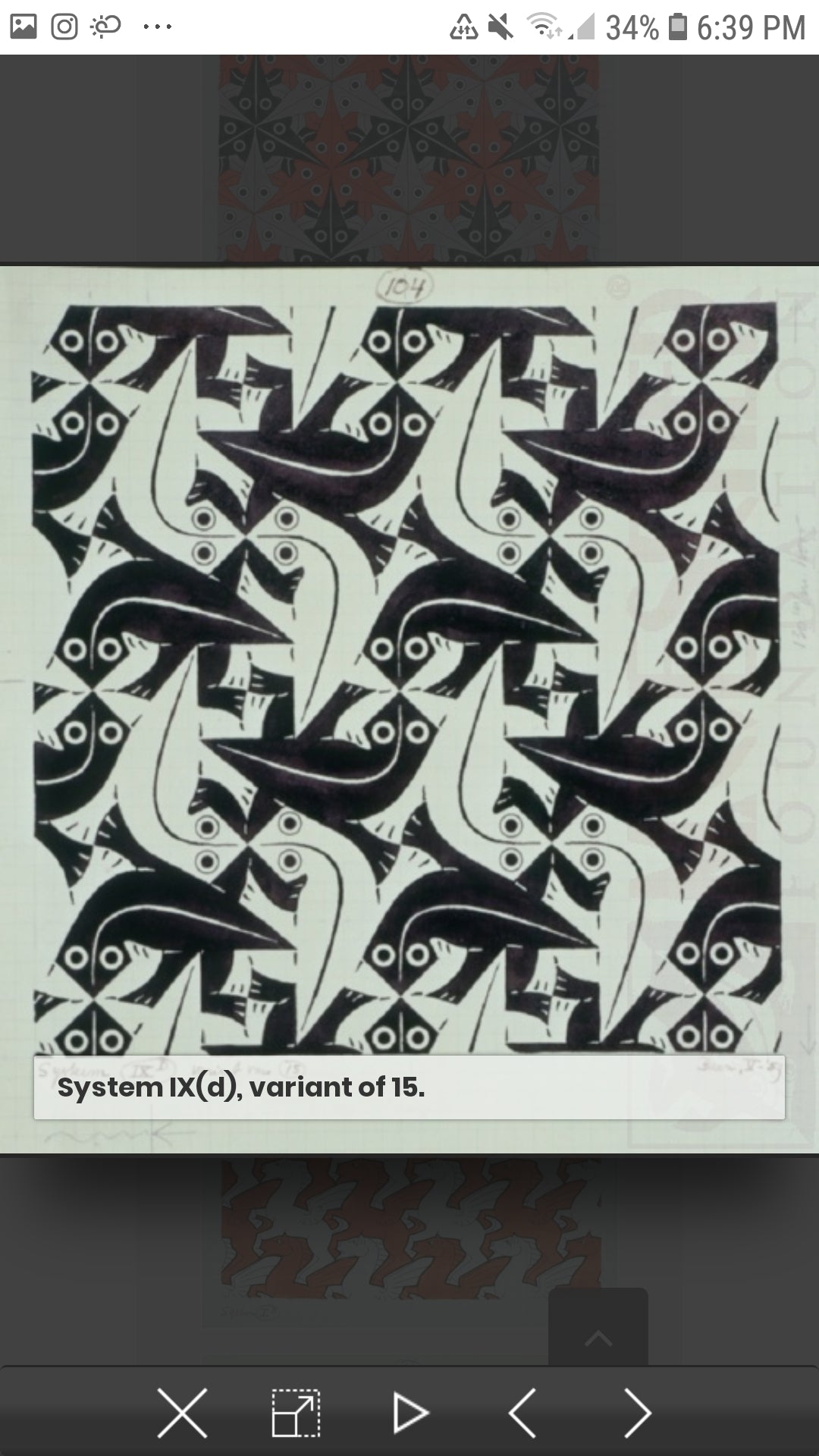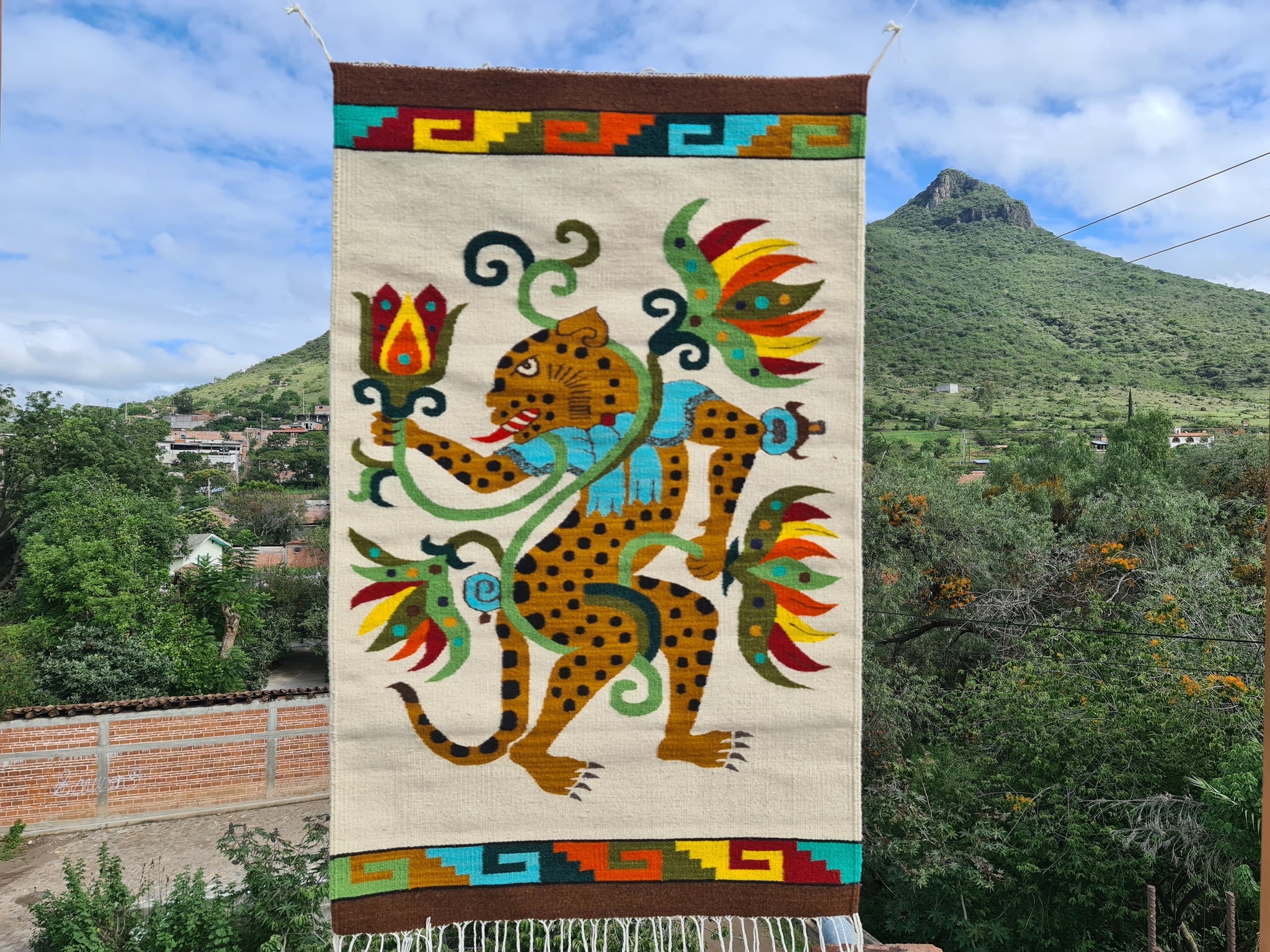Size: 104x128cm; 41x50in; 3.4x4.1ft
Weaver: Faustino Bautista
Materials: undyed hand spun wool from San Baltazar chichicapam
This rug was made by our elders: the wool was hand spun by the grandmas in the town of Chichicapam and the rug was woven by Faustino, Doña Soledad's husband, she is the local Temazcal healer in town. I went to visit them to take this picture to highlight their work, elders are still very reluctant to having their picture taken but Don Faustino agreed to pose so that we can showcase their rugs online.
Doña Soledad had a very intense flu for about a week and she was just getting better, this started before we had any known COVID19 cases in Oaxaca so we don't know what happened to her, most likely just a normal flu. I kept a safe distance from them of course and had my visit be warm and brief. I wanted to check on her since I knew she had some symptoms since the last time we went for a temazcal. She is doing well thanks to some temazcal, some medicines from the doctor and lots of herbal remedies.
This is a time when we need to remember to take care of our elders and show up for them. It is a time to reconnect with the earth and the ancient wisdom that our elders remember.
Benizaa (Zapotec) weavers started reproducing European art probably enticed by European travelers, it could have been that Europeans saw a similarity if Escher's tessellation series with our sacred geometric patterns that are fractal like patterns created thousands of years ago in our culture.
This lizard tessellation is made from an hexagon cut in different ways to make each part of the lizard so that at the end the figure ends up matching the jigsaw. The meaning of the lizard (reptile) is enigmatic, as many of Escher's work.
In the greater culture of the Anahuac our ancestors, in the myths of the Toltecs and Teotithuacans, our ancestors describe how the earth Goddess use to navigate the great waters like a giant reptile until the God Quetzalcoatl and Tezcatlipoca split her in half to create the earth and the moon. The continents then appear floating like a giant reptile on the Oceans.
In other tales, the elders narrate how in the journey after death (for those who die of normal deaths or on land, when their journey to Mictlan is almost finished, after many years of wandering and suffering, their bodies, stripped of flesh and heart by the Jaguar God are presented by Xochitonal (a giant reptile) that carries their bones to Mictlantecuhtli and Mictlantecihuatl, the Lord and Goddess of the underworld.
These two stories show the ancient connection of the reptile to the land. Reptiles were the first animal to emerge from the ancient life in the oceans and started to colonize the earth and surely when we die the reptilian part of our brain might be the last part still pulsating with life and consciousness as we wake up to the world of the Underworld. In this light, M C Escher's work (shown in the last image) denotes this same journey of transformation, from the 2D sacred geometry to the 3D imagery and surrounding symbology of growth and transformation only to return the physical 3D to the abstract representation. And what are we but a physical expression of the sacred geometry encoded into our DNA. In the world of the abstract geometry we are crated and to the abstract geometric world we shall return.











































